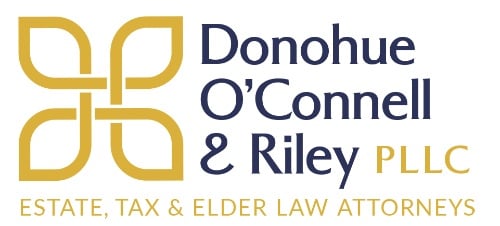Estate Planning, Digital Assets
Planning for Digital Assets in Your Estate Plan

In today’s connected world, our lives are increasingly managed through online platforms—bank accounts, photo libraries, investment apps, social media, and even loyalty programs. Yet when it comes to estate planning, digital assets are often overlooked. If we don’t plan ahead, our loved ones may be left without access to important accounts or treasured memories, and our digital legacy may be mismanaged or lost entirely.
Estate planning isn’t just about physical assets anymore. As technology continues to play a larger role in our personal and financial lives, it’s essential that we incorporate digital property into our estate plans. Whether you’re organizing family photos stored in the cloud, managing online investment portfolios, or running a small business through an e-commerce platform, protecting these assets helps ensure your wishes are honored and your loved ones aren’t burdened with digital uncertainty.
Let’s walk through what digital assets are, why they matter, and how to include them in your comprehensive estate plan.
What Digital Assets Are and Why They Matter
Digital assets include any online accounts, digital files, or electronic property that hold personal, sentimental, or financial value. This can range from the obvious—like bank account logins and email accounts—to the unexpected, such as domain names, subscription services, or cryptocurrency wallets.
Common types of digital assets include:
- Financial accounts: online banking, investment apps, digital payment services like PayPal or Venmo
- Personal data and media: email accounts, cloud storage, photo and video libraries
- Business-related platforms: e-commerce sites, client databases, intellectual property
- Social media profiles: Facebook, Instagram, LinkedIn, and others
- Cryptocurrency and NFTs: Bitcoin, Ethereum, and other digital assets
These assets can carry financial weight, sentimental importance, or critical utility for managing ongoing business or household affairs. Without a clear plan, access to these accounts can become legally complicated or even permanently lost.
How to Create a Digital Asset Inventory
The first step in protecting your digital estate is knowing what you have. Creating an up-to-date inventory of your digital assets helps your executor or loved ones identify, locate, and manage them according to your wishes.
To get started, we recommend:
- List all your digital accounts and assets.
Include everything from online banking to cloud-based photo albums, cryptocurrency wallets, and recurring subscription services. - Record how to access them.
Note usernames, passwords (or where passwords are stored), two-factor authentication requirements, and any necessary devices or apps. - Clarify what you want done with each asset.
Do you want a photo archive preserved? Should your social media accounts be memorialized or deleted? Should digital business assets be transferred to a successor? - Keep the inventory secure and updated.
Store your list in a safe location—whether with your estate planning attorney, in a secure digital vault, or in an encrypted file—and review it regularly to keep it current.
Having a digital asset inventory not only simplifies things for your loved ones but also reduces the risk of identity theft, lost funds, or overlooked subscriptions continuing to charge your estate.
Legal Tools for Managing Digital Property
Digital assets are often protected by privacy laws and terms of service agreements, which can make it challenging for loved ones to access accounts—even with the best of intentions. Fortunately, there are legal tools available to help you grant the necessary permissions and avoid complications.
Two of the most important tools include:
- Incorporating digital assets in your will or trust. Clearly outline how digital property should be handled, including who should access or manage specific accounts.
- Using the Revised Uniform Fiduciary Access to Digital Assets Act (RUFADAA). Adopted by most states, this law allows you to grant fiduciaries legal authority over your digital property, provided you specify your wishes through proper documentation.
Including digital provisions in your estate planning documents helps avoid the risk of account lockout, legal disputes, and lost data. It also signals to your digital service providers that your appointed representatives have lawful access.
Appointing a Digital Executor or Authorized Agent
Just as you appoint an executor for your estate, you can name someone specifically responsible for handling your digital assets. This person—often called a digital executor or authorized agent—should be someone you trust to manage sensitive information and carry out your wishes accurately.
When selecting this person, consider the following:
- Their comfort with technology. Are they capable of managing online accounts and understanding digital platforms?
- Their relationship to your estate. Will they be able to work cooperatively with your executor or trustee?
- Your preferences for digital legacy. Do you want someone who understands the personal value of certain content (like family photos or social media posts) or the business value of digital property?
Once chosen, make sure your digital executor is named in your estate planning documents and that they have access to your digital asset inventory.
Ensuring Access and Security for Loved Ones
Digital planning isn’t just about creating a list and naming a representative—it’s also about ensuring your loved ones can securely access what you’ve left behind. Striking the balance between security and accessibility is key.
Here are a few best practices:
- Use a password manager or digital vault. These tools allow you to store login credentials and encryption keys securely, and many offer legacy access features for trusted contacts.
- Avoid putting passwords directly in your will. Wills become public documents during probate, which could expose sensitive information.
- Leave clear instructions. Provide guidance on where digital records are stored and how to navigate any security measures (like two-factor authentication).
By preparing now, you reduce the chances of digital confusion and protect your loved ones from unnecessary stress or complications.
Leave No Digital Asset Behind
In today’s digital-first world, estate planning isn’t complete without accounting for our online presence and electronic property. Whether you’re safeguarding financial accounts, preserving family memories, or passing along a digital business, thoughtful planning makes a lasting difference.
At Donohue, O’Connell & Riley, we help individuals and families integrate digital assets into their estate plans with confidence and clarity. If you’re ready to take the next step, we invite you to <a href="/contact-us/">contact us</a> today to schedule a consultation. Let’s ensure nothing is left behind—online or off.
June 26, 2025
Asset Protection, Estate Planning
Estate Planning for Unmarried Couples

As more couples choose to build lives together without getting married, estate planning becomes an essential tool for protecting their rights and wishes. Unlike married spouses, unmarried partners don’t automatically inherit from each other or gain authority in legal or medical decisions without specific documents in place. This can leave even the most committed partners vulnerable in times of crisis.
Estate planning for unmarried couples requires proactive steps and thoughtful documentation to ensure your partner is protected—both legally and financially. Whether you’re sharing a home, finances, or a life together, creating a personalized plan helps provide clarity, continuity, and peace of mind.
Legal Challenges Faced by Unmarried Partners
Without the legal benefits of marriage, unmarried couples face several unique hurdles:
- No automatic inheritance rights – If one partner passes away without a will or trust, the surviving partner generally has no legal claim to the estate.
- Limited authority in emergencies – Without legal documentation, partners may be denied access to make healthcare or financial decisions on each other’s behalf.
- Family disputes – In the absence of an estate plan, family members may contest your partner’s rights to assets or even shared property.
- Tax implications – Unmarried partners may face higher tax burdens or miss out on spousal tax exemptions.
Planning ahead with the right legal tools can help you overcome these challenges and ensure your wishes are honored.
Using Wills and Trusts to Protect Each Other
One of the most effective ways to secure your partner’s future is through clearly drafted wills and trusts. These documents spell out your intentions and create legal authority that overrides default state laws.
Wills
A will allows you to:
- Name your partner as a beneficiary of your estate
- Designate an executor you trust to handle your affairs
- Appoint a guardian if you share children
Trusts
A trust can offer added protection and privacy. Benefits include:
- Avoiding probate and the associated delays
- Providing long-term management of assets for your partner
- Reducing estate tax exposure in some cases
By including your partner in these essential documents, you provide both legal authority and emotional reassurance.
Health Care and Financial Decision-Making Authority
In emergency situations, having clear legal authority to make decisions on your partner’s behalf is critical. Unfortunately, unmarried couples do not automatically have this right without documented permission.
Key documents to include in your estate plan:
- Health Care Proxy – Appoints your partner to make medical decisions if you’re incapacitated.
- Living Will – Details your preferences for end-of-life care, giving your partner guidance and peace of mind.
- Durable Power of Attorney – Allows your partner to manage your finances, pay bills, and handle transactions if you become unable to do so.
Putting these documents in place ensures your partner can act on your behalf when it matters most, without unnecessary delays or legal barriers.
Beneficiary Designations Outside of Marriage
Many assets pass directly to a named beneficiary and are not governed by a will or trust. For unmarried couples, making intentional beneficiary choices is vital.
Common assets with beneficiary designations include:
- Retirement accounts (401(k), IRA)
- Life insurance policies
- Bank accounts with payable-on-death (POD) designations
- Investment accounts with transfer-on-death (TOD) designations
Make sure these designations are up to date and accurately reflect your wishes. In the absence of marriage, failing to name your partner can result in those assets being distributed to next of kin instead.
Planning for Shared Assets and Property
If you and your partner own property together or have shared financial responsibilities, it’s essential to plan for how those assets will be handled.
Consider the following strategies:
- Joint ownership with rights of survivorship – Ensures that property automatically passes to your partner upon death.
- Cohabitation agreements – Document financial arrangements, ownership percentages, and what happens if the relationship ends or one partner passes away.
- Trusts – Provide additional control over how property is distributed, especially if children or other beneficiaries are involved.
By clearly outlining how shared assets are to be managed, you reduce the risk of future disputes and help protect the life you’ve built together.
Build a Plan That Reflects Your Commitment
Estate planning for unmarried couples is not just about paperwork—it’s about protecting your shared life and honoring the commitments you’ve made to each other. Taking proactive steps ensures that your partner is recognized and empowered, even when the law doesn’t automatically offer that protection.
At Donohue, O’Connell & Riley, we help couples of all kinds create thoughtful, customized estate plans that reflect their values and relationships. If you’re ready to safeguard your future together, we’re here to guide you every step of the way. <br>
<a href="/contact-us/">Contact us</a> to schedule a consultation and get started.
June 12, 2025

